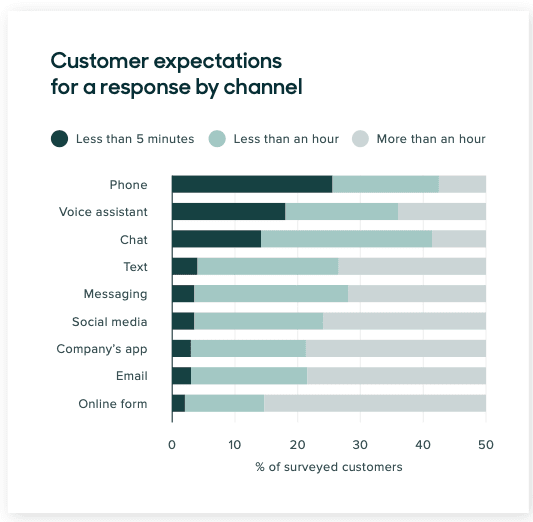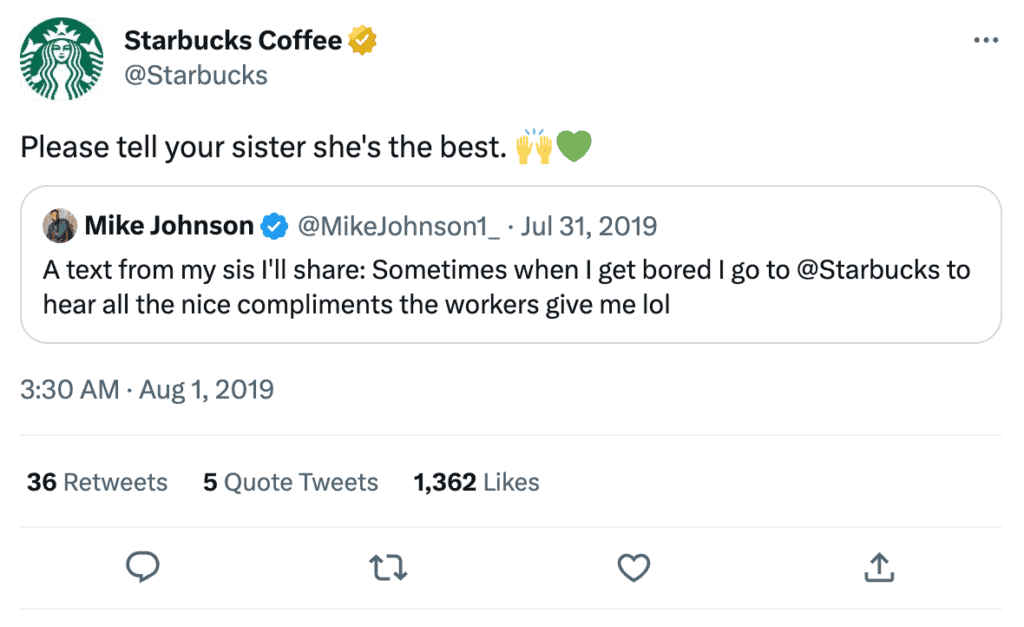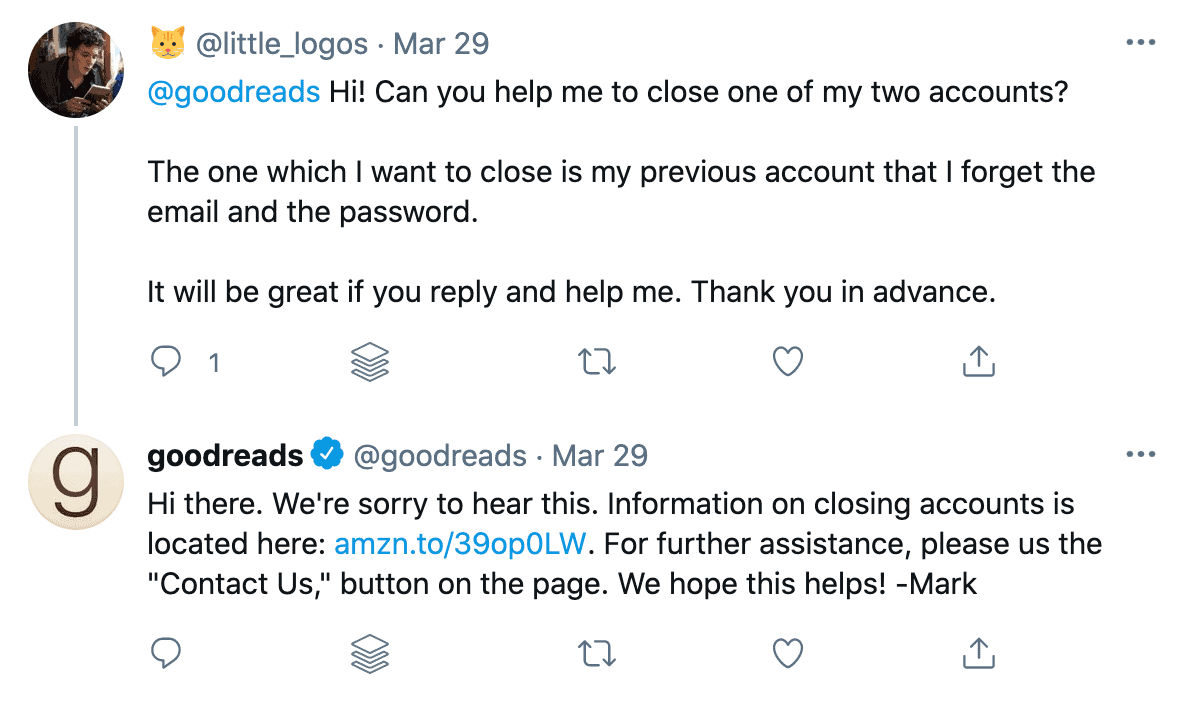Social media has now become a must-use marketing channel for businesses that aim to thrive in the digital age. They are free and accessible to even small businesses with a shoestring budget.
Not only for interacting with customers, businesses can use social media platforms to provide a customer service experience.
Gone are the days when customers have to wait for hours or even days just to get their issues resolved by email. Also, being put on hold for two minutes by the customer service agent when you call them feels like hours.
This is where social media platforms come in handy for providing customer service that is not only more interactive but also more accessible and friendly.
That all being said, social media customer service should be so much more than a mere convenience. In the age of instant communication and digital interactions, businesses often stumble upon common pitfalls that can turn a well-intentioned customer service strategy into a frustrating experience for both the customer and the company.
Let’s dive into common mistakes made in social media customer service that, if left unaddressed, can undermine the very benefits these platforms offer in enhancing customer relations.
What Makes an Exceptional Social Media Customer Service?
Before we get into the nitty-gritty of the common mistakes in social media customer service, let’s take a moment to explore the characteristics that define an exceptional customer service experience on social media platforms.
Proactive Engagement
Exceptional social media customer service is not merely reactive. It should also be proactive. Successful businesses actively monitor their social media channels, keep up with YouTube trends, anticipate customer needs, and initiate conversations. By staying ahead of potential issues, companies can foster a sense of care and attentiveness.
Personalization Touch
In the era of chatbots and automated messages, real-human interaction and response remain potent ways to provide customers with the answers they need.
In other words, beyond automated responses, personalised interactions stand out in the digital landscape.
Addressing customers by name and tailoring responses to their specific concerns creates a connection that goes beyond a transactional exchange.
Swift and Transparent Communication
Time is of the essence in the world of social media. It only takes a second for customers to decide whether or not they connect with your brand.
In this case, exceptional customer service involves swift responses to inquiries or complaints. Moreover, transparency in communication, especially in addressing challenges, builds trust and credibility.
Multichannel Consistency
Whether customers reach out via Twitter, Facebook, or Instagram, a seamless and consistent experience is crucial. Exceptional social media customer service maintains a unified brand voice and quality of service across all platforms.
Consistency across channels not only enhances brand recognition but also ensures that customers receive a standardised level of service, regardless of their chosen channels for interaction.
This harmonious approach contributes to a positive overall brand perception and reinforces the idea that the company is committed to delivering excellence at every touchpoint.
Empathy and Understanding
Demonstrating empathy towards customers’ concerns is a hallmark of outstanding customer service. Businesses that understand and acknowledge the emotions behind customer inquiries create a positive and supportive environment.
For example, when a customer expresses frustration over a product issue on social media, an empathetic response goes beyond an acknowledgment of the problem. It involves expressing genuine concern for the customer’s experience, validating their feelings, and demonstrating a commitment to resolving the issue promptly.
Effective Issue Resolution
Exceptional customer service doesn’t just end with understanding a problem that your customers face and showing them empathy. Remember that they reach out to get their problem solved.
So, excellent customer service extends to providing effective solutions. Going the extra mile to resolve issues demonstrates a commitment to customer satisfaction.
You can create tutorial videos or FAQ videos to help customers better understand your products or services, troubleshoot common issues independently, and maximise the value they derive from your offerings.
Avoid These Common Mistakes of Social Media Customer Service
While social media provides tons of opportunities for businesses to engage with their audience, it also introduces some challenges. Getting the lowdown on these slip-ups will help you breeze through the world of online customer service like a pro, keeping your brand’s vibe positive and your customers happy.
Lack of Timely Responses
One common mistake that can send your customer service strategy into a tailspin is the lack of timely responses. At least 90% of the customers rate an instant response to be an important factor when they seek customer service assistance.
According to a report by Zendesk, most customers expect to get a response in less than an hour from the brand they reach out to via chat and messaging– which is the common form of social media customer service.

Image from Zendesk
It’s safe to say that in the social media customer service field, time is more than just money. It’s the currency of customer satisfaction. Patience is a scarce commodity here, and the absence of a swift response leads to slamming the door on an open conversation.
So, always try to respond to your customers’ inquiries as soon as possible. Whether it’s a question, concern, or feedback, a quick response shows that you’re attentive and value their interaction.
Of course, you can’t be available around the clock. While 24/7 availability is challenging, setting clear expectations for response times can help manage customer expectations. Establishing specific response time frames, such as within a few hours or by the next business day, lets customers know when they can anticipate hearing back from you.
Or, you can opt for chatbots to take care of the most basic inquiries and routine tasks. Before they can connect with a live representative, chatbots can provide quick answers, gather essential information, and guide customers through simple processes
Over-Automation of Responses
While chatbots can be really helpful in streamlining routine interactions, the over-automation of responses poses a risk to the authenticity and personal touch of customer service. It’s essential to strike a balance between automated efficiency and genuine human engagement.
When every interaction is overly scripted or automated, customers may feel like they’re talking to a machine rather than a brand that understands their unique needs. Only use chatbots for frequently asked questions where standardised responses are appropriate.
For more complex issues or situations requiring empathy and understanding, it’s crucial to have a human touch. Try to give your customers a choice whether they want to continue interacting with a human representative.
Providing the option for customers to seamlessly transition from automated responses to a live agent ensures that their needs are met at the level of assistance they prefer.
Inconsistent Brand Voice
When messages lack cohesion, the brand appears disjointed, confusing, and even untrustworthy to its audience. Imagine encountering a brand that is humorous on Twitter, formal on LinkedIn, and casual on Instagram.
This lack of harmony creates cognitive dissonance and dilutes the brand’s essence, making it challenging for customers to connect with and understand the values it represents through social media marketing software.
Of course, since different social media platforms have different demographics, you might think that you should adapt it contextually to suit the nuances of each social media platform.
That’s not wrong, but also remember that (if it’s not done right) it can show inconsistency– it’s like your brand has multiple personalities.
So, while adapting to the unique characteristics of each platform, strive for a cohesive thread that runs through all your interactions. This involves understanding the demographic and communication style typical of users on each channel and tailoring your brand’s voice accordingly.
Whether it’s the character limit of Twitter, the visual-centric nature of Instagram, or the professional tone of LinkedIn, the brand voice should be an adaptable but consistently recognizable entity. An AI social media post generator can come in handy as the AI algorithms in it can learn about a brand’s unique tone and style, and create personalised content to resonate.
Ignoring Negative Customer Feedback
It can be tempting to only respond to positive feedback instead while trying not to care about the negative ones. But, failing to actively listen and respond to this not-so-good feedback is a missed opportunity with significant consequences.
Customer feedback provides your business with valuable insights into what works well and where improvements are needed. Acknowledging positive comments shows appreciation and can amplify brand advocacy.
Responding constructively to negative feedback not only addresses specific concerns but also demonstrates a commitment to continuous improvement.
When you pay attention to both positive and negative feedback, that means you strengthen your relationships with existing customers and position yourself as attentive and responsive to the evolving needs of your audience.
Neglecting to Monitor Mentions and Tags
Some customers might mention you directly or send you a Direct Message on social media– others just tag your brand name or use relevant hashtags to share their experiences, thoughts, or inquiries.
This indirect form of communication can be a goldmine of valuable insights, and neglecting to monitor these mentions and tags is a critical oversight in social media customer service.
Every tag and mention is a window into the customer’s perception of your brand, and by disregarding these, you risk missing out on crucial opportunities for engagement.
Whether it’s a shoutout for an exceptional product, a query about your services, or even a customer expressing dissatisfaction, these indirect communications carry weight in shaping your brand narrative.
Look how Starbucks reply to their customer’s tweet:

Image from TalentPop
Neglecting to monitor mentions and tags not only leaves customer sentiments unaddressed but can also lead to missed chances to showcase exceptional customer service publicly.
Remember that if negative experiences go unacknowledged, they might snowball into larger issues as other customers observe the lack of responsiveness or even responsibility.
So, regularly monitor all social media channels where your brand has a presence. Utilize social media monitoring tools to stay informed about mentions, messages, and comments across platforms.
Here are some popular tools you can use to monitor mentions for social listening:
- Brandwatch
- Band24
- Buffer
- Sprout Social
- Keyhole
Underestimating the Power of Apologies
We’ve talked about empathy and understanding before. That’s why acknowledging mistakes with a sincere apology can be a game-changer. Saying “sorry about that” might seem like a simple phrase, but its impact goes far beyond mere words.
When a customer experiences an issue and expresses their concerns on a public platform, a genuine apology not only validates their feelings but also showcases the human side of your brand.

Image from Digital Strategy Consultants
Responding promptly and owning up to mistakes, whether they are product-related, service-oriented, or a misunderstanding, sends a powerful message.
It communicates that the business values its customers, is responsive to their concerns, and is dedicated to delivering a positive experience.
Saying “No” without Offering Suggestions
Not all problems can be resolved with a straightforward “yes,” and sometimes saying “no” is a necessary aspect of social media customer service. However, the critical mistake lies in merely delivering a negative response without providing alternative solutions or suggestions.
When businesses say “no” without offering suggestions, it leaves customers feeling stranded and frustrated. Social media is a platform where immediate solutions are often expected, and a flat-out denial without guidance can give the impression of indifference or inflexibility.
Instead of a blunt rejection, providing alternatives, workarounds, or recommendations showcases a commitment to finding resolutions within the realm of possibility.
Inconsistent Response Times Across Channels
For businesses that expand their presence across various social media channels, maintaining consistency in response times becomes a crucial yet often overlooked aspect of effective customer service. The challenge here is to provide a uniform and timely experience regardless of the platform, as each channel comes with its unique set of expectations and dynamics.
Imagine a customer receiving a rapid response on Twitter but experiencing a significant delay on Instagram; the disjointed experience might leave them questioning the reliability of the brand’s customer service.
Again, use automation selectively for handling routine and straightforward queries. Or, you can use those monitoring tools mentioned in the previous sections to help you harmonize response times.
Lack of Employee Training
Exceptional customer service comes from well-trained customer service agents who understand the intricacies of social media interactions. The mistake of lacking employee training manifests in several ways: inconsistent responses, inadequate issue resolution, and a failure to uphold the brand’s image.
You know that in social media, negative reviews can be widespread in just a matter of minutes. Social media customer service agents should be equipped to handle public inquiries, resolve issues diplomatically, and represent the brand cohesively across diverse channels.
So, when you want to nail your social media customer service, invest in a proper employee training program. The program should cover not only the technical aspects of using social media platforms but also the soft skills required for effective and empathetic communication.
Wrapping Up
Social media customer service should go beyond answering your followers’ or customers’ questions. It’s also about engaging with your audience, anticipating their needs, and establishing a genuine connection.
By actively participating in conversations, acknowledging positive feedback, and addressing concerns before they escalate, you not only provide solutions but also demonstrate a commitment to customer satisfaction and community building.
Now that you understand all the common pitfalls, you know what you need to bring to the table to avoid them. All of this is for the sake of creating a more seamless and positive customer experience.


